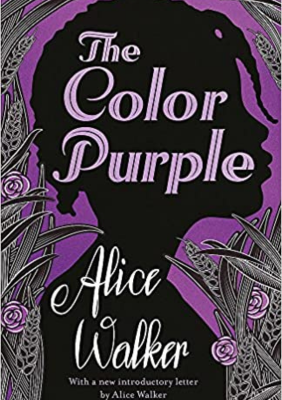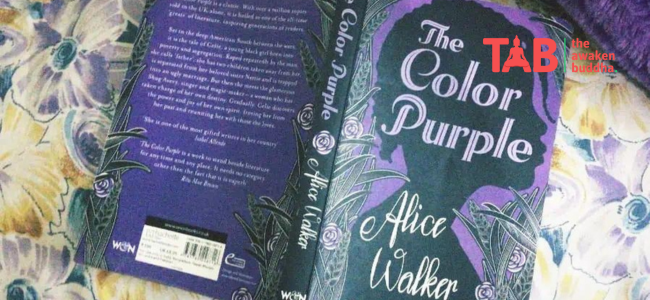- Background on the Pulitzer Prize
- Overview of “The Color Purple”
- Themes and Symbolism in the Novel
- Analysis of Characters
- Impact and Legacy of the Book
- Reception and Controversies
- Film Adaptation and Musical
- Critical Acclaim and Awards
- Influence on Contemporary Literature
- The Author: Alice Walker
Introduction
“The Color Purple” is a critically acclaimed and Pulitzer Prize-winning novel published in 1982. Written by Alice Walker, this remarkable work of fiction explores the themes of race, gender, identity, and resilience. Through the captivating story of Celie, a young African-American woman, Walker delves into the complexities of African-American life in the early 20th century.
1. Background on the Pulitzer Prize
The Pulitzer Prize is a prestigious award that recognizes journalism, literature, and musical composition achievements. Established by Joseph Pulitzer, a renowned newspaper publisher, in 1917, the prize aims to honor excellence in writing and artistic endeavors. Each year, the Pulitzer Prize committee selects winners across various categories, including Fiction, Non-Fiction, Drama, and Poetry.
2. Overview of “The Color Purple”

“The Color Purple” occurred in rural Georgia in the early 1900s. The narrative unfolds through a series of letters and diary entries written by Celie, who endures immense hardship and abuse. As Celie navigates her challenging life, she connects with other women, such as Shug Avery and Sofia, who inspire her to find her voice and reclaim her identity.
3. Themes and Symbolism in the Novel
One of the central themes in “The Color Purple” is the power of self-discovery and self-empowerment. Celie’s transformation from a voiceless and oppressed individual to a confident woman showcases the resilience of the human spirit. Additionally, the novel explores the themes of love, sisterhood, spirituality, and the impact of systemic racism and sexism.
Symbolism plays a significant role in the book, particularly through the color purple itself. Purple is associated with spirituality, creativity, and independence, symbolizing the strength and resilience of African-American women.
4. Analysis of Characters
“The Color Purple” features a diverse cast of characters, each with their struggles and triumphs. Celie, the protagonist, undergoes a profound journey of self-discovery. Shug Avery, a singer and Celie’s love interest challenges societal norms and encourages Celie to embrace her desires. Sofia, Celie’s stepson’s wife, embodies strength and defiance in the face of oppression.
5. Impact and Legacy of the Book
“The Color Purple” has profoundly impacted readers and scholars alike. The novel addresses important issues of race, gender, and sexual identity, making it a groundbreaking work of literature. Its exploration of the African-American experience, especially through the lens of black women, has contributed to a broader understanding of intersectionality.
6. Reception and Controversies
While “The Color Purple” received critical acclaim and won the Pulitzer Prize for the book in 1983, it also faced controversies. Some critics argued that the novel perpetuated negative stereotypes of African-American men. However, others celebrated its honest portrayal of the struggles faced by African-American women and praised its empowering message.
7. Film Adaptation and Musical
In 1985, “The Color Purple” was adapted into a highly successful film directed by Steven Spielberg. The movie garnered critical acclaim and further expanded the book’s reach. Moreover, a Tony Award-winning musical adaptation premiered on Broadway in 2005, introducing new audiences to the story’s power and resonance.
8. Critical Acclaim and Awards
Aside from winning the Pulitzer Prize for Fiction, “The Color Purple” received numerous accolades, including the National Book Award for Fiction. Its impact and literary merit have been widely recognized, cementing its place as a seminal work of American literature.
9. Influence on Contemporary Literature
“The Color Purple” has left an indelible mark on contemporary literature. Its exploration of race, gender, and identity has influenced subsequent generations of writers, inspiring them to address similar themes in their works. The novel’s unflinching portrayal of the African-American experience continues to resonate with readers worldwide.
10. The Author: Alice Walker
Born in 1944, Alice Walker is an acclaimed American author, poet, and activist. Her writings often delve into themes of race, gender, and social justice. “The Color Purple” remains Walker’s most well-known work, solidifying her status as a literary icon. She has used her platform throughout her career to advocate for equality and human rights.
Conclusion
“The Color Purple” is a timeless masterpiece, captivating readers with its powerful narrative and profound exploration of race, gender, and identity. Alice Walker’s novel continues to inspire and challenge audiences, leaving an enduring legacy in literature.
FAQ
1: What is the sense of the name “The Color Purple”?
The title “The Color Purple” holds multiple meanings within the context of the novel. Purple symbolizes spirituality, creativity, and independence, serving as a metaphor for the energy and resilience of African-American women.
2: How did “The Color Purple” contribute to discussions about race and gender?
“The Color Purple” played a central role in discussions about race and gender by shedding light on the intersecting forms of oppression faced by African-American women. The novel’s exploration of these issues prompted important conversations about equality, representation, and the power of individual agency.
3: Has “The Color Purple” faced any censorship challenges?
Yes, “The Color Purple” has faced censorship challenges due to its explicit content, including depictions of sexual abuse and controversial language. However, many defenders of the novel argue that these elements are crucial for an honest portrayal of the African-American experience.
4: Are there any recommended readings for further exploration of the novel’s themes?
Certainly! For further search of the themes in “The Color Purple,” you may consider reading works such as “Their Eyes Were Watching God” by Zora Neale Hurston, “Beloved” by Toni Morrison, and “The Bluest Eye” by Toni Morrison. These books delve into similar themes of race, gender, and identity.
5: How did “The Color Purple” impact Alice Walker’s career?
“The Color Purple” catapulted Alice Walker to literary stardom, earning her the Pulitzer Prize for Fiction and National Book Award for Fiction. The novel’s success elevated her status as an influential writer and activist, allowing her to amplify her voice in advocating for social justice and equality.










